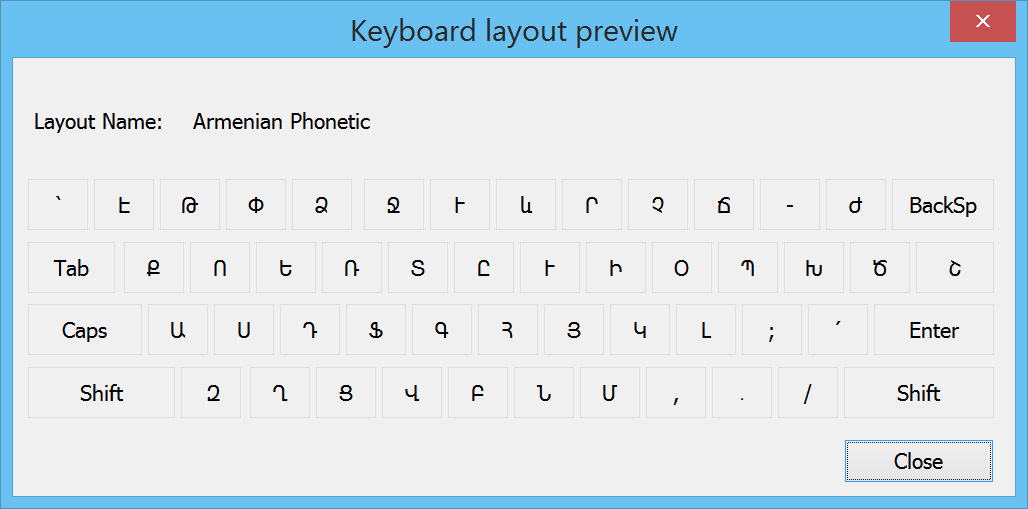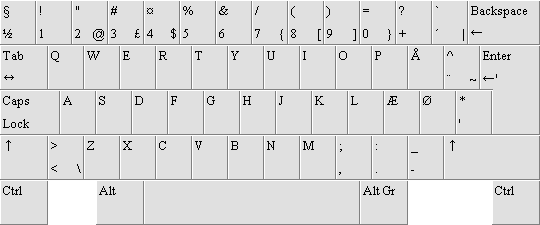Keyboard layout: Difference between revisions
add swedish layout |
→[[US language|US]]: ==UK== The United Kingdom layout is much the same as the United States, however |
||
| Line 82: | Line 82: | ||
::[[image:Keyboard Layout Middle North America.png|Middle north american keyboard layout]]. |
::[[image:Keyboard Layout Middle North America.png|Middle north american keyboard layout]]. |
||
==[[UK]]== |
|||
The United Kingdom layout is much the same as the United States, however the placement of the " and @ are switched, and this can cause frustration when an operating system has been set to the wrong region. |
|||
See also: [[Language code]]. |
See also: [[Language code]]. |
||
Revision as of 12:23, 10 June 2004
There are many keyboard layouts, for people to be able to type in different languages. The standard English keyboard layout is known as QWERTY. Various alternatives to the QWERTY layout have been suggested, many claiming advantages such as higher typing speeds. The most famous alternative is the Dvorak Simplified Keyboard.
Keyboard structure
The keys labelled only with a capital letter can type both small and capital letters. To type the symbol at the top left of a key, the Shift key, labelled "↑", is used. To type the symbol at the bottom right of a key, the Alt-Gr key is used.
In the standard keyboard structure are included too the control and function keys.
Dead key
Many languages include additional characters, such as accented characters, that do not easily fit onto a standard English keyboard. Typing the accented characters is made easier by using a dead key feature. When you use the dead key, you press the designated key for the accent that you want; nothing will happen on the screen. Next, you type the character that you wish to have accented. If you type the correct accent and character, the desired accented character appears on the screen. This key combination requires that you type an acceptable sequence. For example, if you type the accented dead key followed by the letter, "a," you will get the accented "a." If you type the accented dead key followed by the "t" key, you will not get anything on the screen unless that particular font includes an accented "t" character. Alternatively, you get an accent as a separate character, followed by the other character.
To just type a diacritical mark, it should be followed by a space.
Example keyboard layouts
Note: The following layouts assume that the physical location of all keys are the same, with the same scan codes, and that setting the keyboard layout in Windows works correctly.
How do you type a "{"?
Pressing Ha/En key once switches between Hangul as shown, and English. As there is both a Hangul IME and Hangul keyboard layout, there presumably exists a physically different keyboard for Hangul.
The United Kingdom layout is much the same as the United States, however the placement of the " and @ are switched, and this can cause frustration when an operating system has been set to the wrong region.
See also: Language code.






